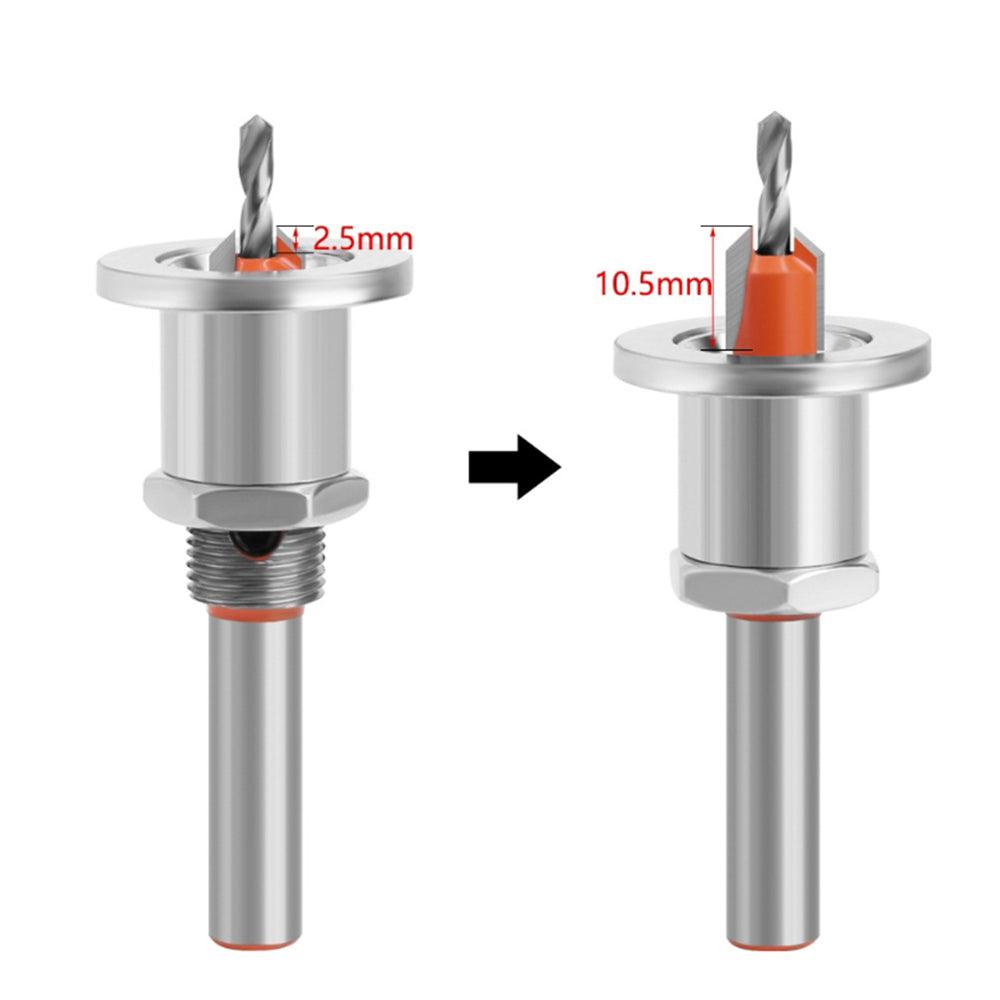1. Screw Size: Consider the size of the screw head you intend to use. Countersink bits are available in various sizes to match different screw sizes. Ensure that the countersink bit you choose corresponds to the size of the screw head you plan to use. Common screw sizes include #6, #8, #10, and #12.
2. Material: Different materials require different countersink bits to achieve optimal results. For example:
Metal: When working with metal, a countersink bit designed specifically for metal or a combination drill/countersink bit is recommended. These bits are designed to cut through metal efficiently and create a clean, chamfered hole for the screw head.
3. Countersink Angle: Countersink bits come in various angles, typically 82 degrees, 90 degrees, and 100 degrees. The angle refers to the slope of the countersink hole. The choice of angle depends on personal preference and the type of screw you're using. A general guideline is to use a 82-degree countersink bit for hardwoods, a 90-degree bit for softwoods, and a 100-degree bit for metals.
4. Depth Control: Some countersink bits come with an adjustable depth stop or collar. This feature allows you to control the depth of the countersink hole, ensuring consistent results across multiple screws. If you require precise and uniform countersinks, consider using a countersink bit with depth control
.

5. Pilot Hole Size: If you're using a countersink bit to create a recess for a screw head, you may need to drill a pilot hole first. The pilot hole is typically smaller than the diameter of the screw shaft and helps guide the screw into the material. Ensure that your countersink bit is compatible with the pilot hole size required for your specific screw.
6. Compatibility with Power Tools: Consider the type of power tool you plan to use with the countersink bit. Most countersink bits are compatible with standard drill chucks. However, if you're using a specific tool or system, such as a quick-change chuck or a specific brand's drill, verify that the countersink bit you choose is compatible with your tool.
It's recommended to test the countersink bit on a scrap piece of material before working on your actual project. This allows you to ensure that the chosen bit creates the desired countersink, and the screw head sits flush or slightly below the surface as intended.
Remember to wear appropriate safety gear, follow manufacturer's instructions, and work with caution when using power tools or cutting tools.
Overall, selecting the right countersink bit involves considering the screw size, material, desired result, countersink angle, depth control, pilot hole size, and compatibility with your tools. By taking these factors into account, you can achieve clean, flush, and professional-looking countersinks in your woodworking or metalworking projects.